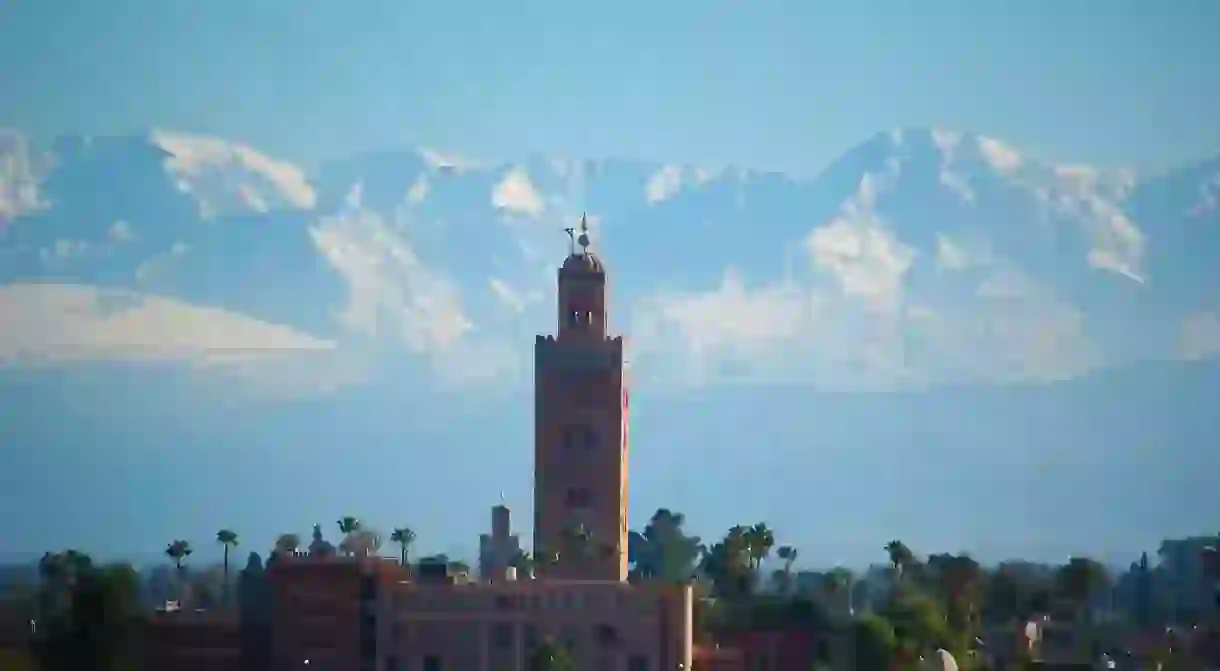18 Things to Do in Marrakech for an Authentic Experience

Many people associate the thousand-year-old city of Marrakech with labyrinthine alleyways and snake charmers, which is quite right – but it is equal parts ancient and modern. There are many hip, as well as historic, things to discover in ‘the Red City’ for a truly authentic experience. Think drinking spice-infused cocktails at an underground bar, tucking into slow-cooked lamb and watching artisans at work. Culture Trip curates 18 things to add to your Marrakech itinerary.
Take in great views and culture at the Heritage Museum
Museum
Snap Instagrammable pictures at Jardin Majorelle
Museum, Botanical Garden
Go back in time at Le Jardin Secret
Museum, Botanical Garden
Le Jardin Secret, a secluded riad (a traditional Moroccan house) in the heart of the Medina on Rue Mouassine, features two gardens, a museum, boutique and two cafes. The palace dates back more than 400 years but it was rebuilt in the mid-19th century – and, over the years, it’s hosted some of Morocco’s most important political figures. Head up to its tower, one of the highest in the Medina, for views stretching to the Atlas Mountains, and enjoy strolling around its picturesque gardens. Visit in the morning while it’s quieter and join a guided tour to learn more about its history.
Brush up on your history at Bahia Palace
Historical Landmark
This 19th-century palace, set across two acres in the middle of the Medina, is one of the best-preserved historical sites in Marrakech. It was built by Grand Vizier Si Musa in the 1860s and later expanded by his son, Si Ba Ahmed, for his four wives and 24 concubines. It comprises 150 rooms with Andalusian and Moorish influences and intricate marquetry – but the pièce de résistance is the Court of Honour, with a 1,500sqm floor made of Italian marble.
Sip a Moroccan spice-infused cocktail at Baromètre
Bar, Restaurant, Cocktails
Cocktail lover? Head down to the experimental Baromètre – Marrakech’s top nightspot, bar and restaurant. Along with a menu of classic drinks, this underground bar brings in a bit of the Medina with local spice-infused spirits. Try the Marrakech Market, which blends whisky with cinnamon, orange and saffron.
Watch the sunset over dinner at Nomad
Restaurant, Moroccan
Sip mint tea on the terraces of Cafe de France
Cafe, Moroccan
Morocco is known for its mint tea – and Cafe de France brews a mean pot. Enjoy this sweet drink (or something stronger on the menu) from the cafe’s terrace, which overlooks the bustling Jemaa el-Fnaa market in the Medina quarter. Here, you can expect to watch a roster of local street performers.
Watch artisans make leather at the tanneries
Architectural Landmark, Historical Landmark
Head to the Bab Debbagh quarter, in the northern end of the Medina, to learn all about one of Marrakech’s oldest crafts. Leather tanning is a time-honoured practice and it’s fascinating watching artisans at work. Jump in a taxi to Place Moukef or Bab Debbagh to get there and visit first thing in the morning to see the tradesmen in action.
Day-trip to the mountains of Imlil
Natural Feature
Take cues from Marrakech locals and head up to the mountains for respite. The (yellow) shared cabs, parked just down from Jemaa el-Fnaa, can whizz you up to the Atlas Mountains in an hour and a half. Trek up to Toubkal, the highest peak in North Africa, or walk around Berber villages.
Watch street performers at Jemaa el-Fnaa
Market
Haggle over trinkets and treasures in the Medina
Historical Landmark, Architectural Landmark
Try a slow-cooked lamb recipe that’s been handed down for generations at Mechoui Alley
Market, Moroccan
For hundreds of years and several generations, the families of Mechoui Alley have woken up early in the morning, stuck a whole lamb on a stick and put it in a large underground oven to slowly roast for four-to-six hours. The result is a deliciously succulent and tender plate of meat that practically falls off the bone. Sprinkle on some cumin and salt for an extra layer of flavour.
Get scrubbed down at Hammam Dar el-Bacha
Spa
There are few things as quintessentially Moroccan as a trip to the hammam – the Middle East’s answer to a thermal spa. Head on down to the largest public one, Hammam Dar el-Bacha, with your bathing essentials and enjoy being scrubbed across every inch of your body. Be sure to check the timings for men and women before you go.
Indulge in French fine dining at the Grand Cafe de la Poste
Restaurant, French
Learn about local weaving techniques at Dar Si Saïd
Building, Museum, Natural Feature
Dar Si Said, otherwise known as the Museum of Moroccan Arts, is Marrakech’s oldest museum and it’s where you’ll learn about different Moroccan rug styles. Each region and city in Morocco has its own flair. You’ll see some magnificent examples of traditionally made rugs here, all while also learning about the weaving techniques it takes to create them.
Discover old Marrakech at the Maison de la Photographie
Museum
Buy a pair of leather slippers at Atika
Shop
Having visited the tanneries, you’ll no doubt feel inspired to leave with some leather goods. Head to Atika for some of the best handmade leather loafers in the city. And don’t be surprised if you leave with more than one pair – there are endless leather colourways, while the store stocks many suede styles too.
Cosy up with a novel at the Cafe du Livre
Bookstore, Shop
If you’re looking for English-language books to pass the time on your bus journey down south, then Marrakech isn’t much help as most bookshops only stock French novels. But fortunately the Cafe du Livre keeps a good selection of second-hand English books. It also has the only weekly pub quiz in town.
Sadie Whitelocks contributed additional reporting to this article.













